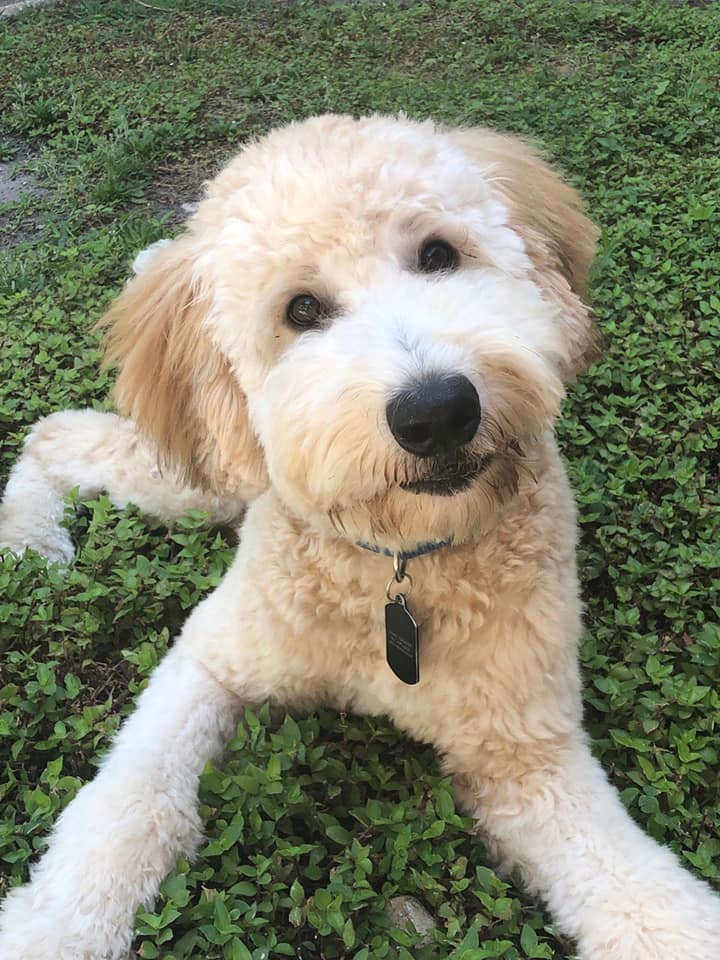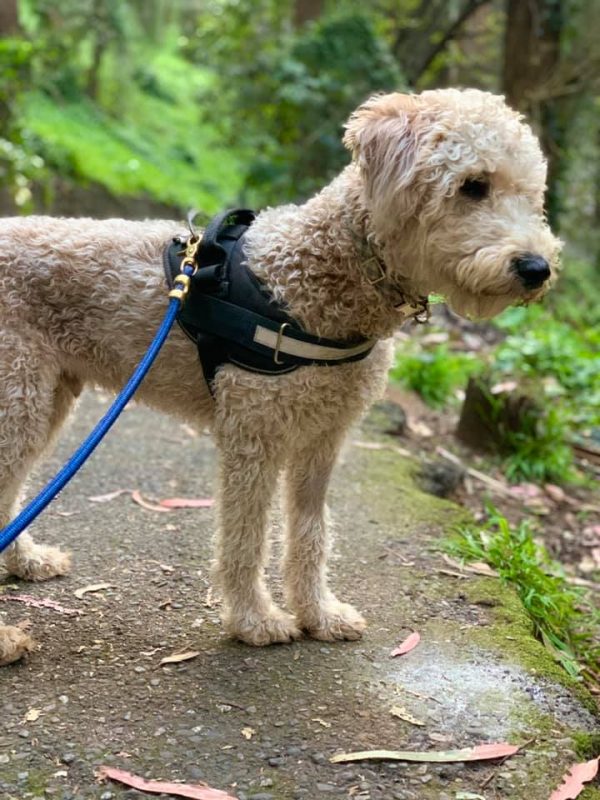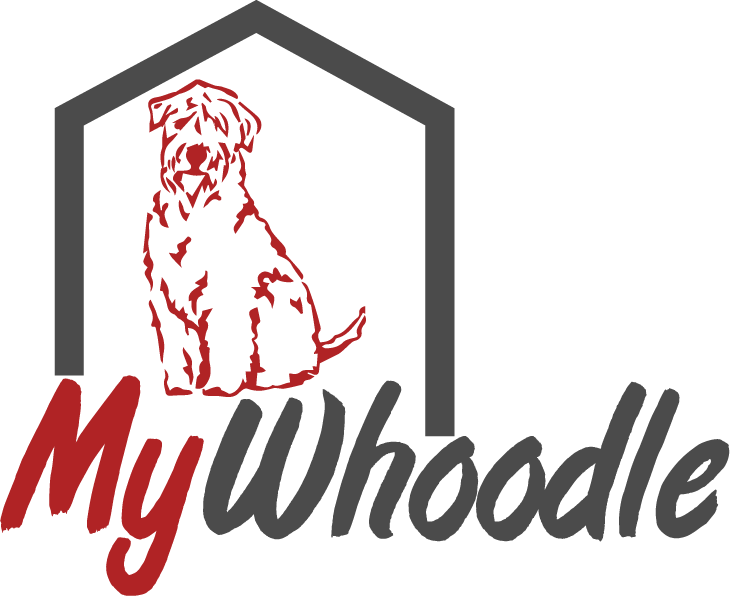Whoodle Behavior
Understanding the behavior of your Whoodle is a great way to build a strong relationship between you and your new dog. We’ve compiled a list of important behaviors that often are misunderstood, as well as the affect training and socialization has on your dog’s overall behavior. Read below to gain insight into a Whoodle’s mind and see if they’re the right breed for you.

Temperament
The temperament of a Whoodle is absolutely phenomenal. This hybrid dog is constructed of two the world’s family dog breeds. The Wheaten Terrier, sociable, loving and alert by nature. As well as the Poodle, with his faithful and intelligent nature. The two make a fantastic combination. Whoodles are extremely tolerant, affectionate and loyal. This makes them excellent family pets and well suited to families with children. Having such a friendly and sociable personality creates a dog who greets people happily and gets along with anyone they encounter. Whoodle are very gentle and make great playmates for other dogs. Overall they are a very loving breed that has grown so much in popularity due to their fantastic characteristics gathered from both parent breeds.
Behavioral Effects of Training & Socialization
Training
Whoodles, like any other dog do require some training to keep their minds sharp. Giving them a job to do, learning commands, teaching the basics of how to play with humans and engage in positive interactions fuels the dog’s desire to please. Having a proper foundation of training aids in building the communication between you and your dog. The more confidence your dog has in your ability to lead, the less behavioral problems people tend to see in their pets. Things like separation anxiety, barking at the door, lunging, or just not listening can all be improved or even eliminated through training. Stronger communication is built through training your Whoodle, and serves as a great tool to preventing unwanted behaviors your dog may have developed otherwise.
Socialization
Whoodles are a very friendly breed and do well with other animals. However, every dog is an individual. They each hold memories and experiences specific to themselves. Whoodles that are appropriately socialized as puppies have been shown to exhibit significantly less behavioral problems as adults. Having a dog who has experienced many different things allows him to be confident in his surroundings. When socialization doesn’t take place many dogs will develop aggression or fearfulness as a way to cope with changes they’re unfamiliar with. Desensitizing your Whoodles to different stimuli can tremendously increase your dogs knowledge in understand the difference between things that are dangerous and things that may appear dangerous but are of no concern to them (such as fireworks). As they come into adulthood, having that basic knowledge of the world surrounding them is vital to living a stress free life by your side.

Whoodle Body Language
Understanding your Whoodle’s body language is a simple way you can enhance your communication and understanding of not only your dog, but other dogs interacting with your dog as well.
Tail Wagging
Often associated with happiness, tail wagging can also be an indication of how aroused the dog is. Fast wagging could be more similar to extreme excitement and anticipation, whereas longer sweeping motions are indicative of lower levels of excitement such as contentment and joy. The tail’s position can also give clues into your dog’s emotional state. A tail tucked under the rear or pointing downward is often a sign of submission, fear or stress. If you see his tail held straight up like a flagpole he’s exhibiting confidence or assertiveness. Most of the time a relaxed dog will have his tail in a neutral position. Recognizing the difference in behavior involving the tail will help you have a better understanding of what your Whoodle is feeling, or when his mood changes.
Facial Expressions
- Lip Lickin
When a dog licks their lips unprovoked (meaning you’re not holding a treat above his head) it is most often a signal given to illustrate discomfort or even pain. This can be physical in the form of coping with an injury or mental being shown as anxious behavior in response to an uncomfortable situation. - Smiling
This happens when they open their mouths and pull back their lips, letting their tongues lap over their teeth. This “dog smile” usually occurs in situations when they are relaxed and appear happy, which is why dog owners think it is a smile. These “dog smiles” also often occur in response to a human smile, which is a phenomenon called laughter contagion. Dogs may appear to smile because we smile at them.
- Yawning
This happens when they open their mouths and pull back their lips, letting their tongues lap over their teeth. This “dog smile” usually occurs in situations when they are relaxed and appear happy, which is why dog owners think it is a smile. These “dog smiles” also often occur in response to a human smile, which is a phenomenon called laughter contagion. Dogs may appear to smile because we smile at them.
- Eyes
If you can see the whites of your dog’s eye, or “whale eye” it is an outward expression of discomfort, anxiety, or stress. This can often be seen in dogs who struggle with resource guarding. When you go to take a bone or toy away from them you might see this “whale eye” before they react because they interpret this a dire situation where their life necessities are being stolen. Eye contact is also a key indication of the emotional state of your dog. Staring intently at another dog can be a sign of aggression or be interpreted as a threat. Avoiding eye contact all together can show submission or stress.
Posture
The posture of your dog can give further insight into how he’s feeling. A dog thats hunched down might be nervous, fearful, or he may be expressing submission to something he’s worried about in an attempt to make himself appear smaller and less threatening. The same can be said for rolling onto their back, exposing their belly. This is just an extreme version of “I’m not a threat”. On the other hand, if your dog rolls onto their belly in a relaxed and controlled state it can be a request for belly rubs. Another meaningful posture is having the body shifted forward with the weight primarily on the front end of the dog, this can be associated with wanting to get close to something, sniffing, indicating interest. However, when paired with aggressive body language it can be a form of making himself bigger, appearing more threatening. Lastly, standing with a raised paw can indicate uncertainty, a dog may stand with his paw raised when feeling insecure. This is notably different than limping, in which a dog walks while holding a paw above the ground, this would be more likely a sign of injury.

Overall, the more in tune you get with your Whoodle’s behavioral cues, the better you’ll be able to understand and communicate with them throughout their lifetime. Your dog relies on you to decipher what his body language means. Having a firm understanding of what your dog is communicating through this language can help you predict your dog’s behavior, allowing you to prevent any problems before they start.
